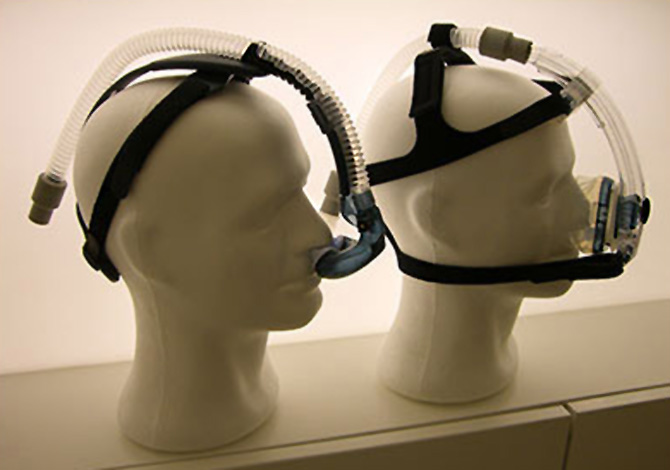What is CPAP?
by Dr Kenny Pang

A non-invasive method of treatment.
This is a non-invasive method of treatment, it entails using continuous positive airway pressure by a mask worn by the patient on the nose or the face throughout the night. CPAP is the most effective and frequently used treatment for OSA, but the issue of compliance is a major problem.
It only works if the patients wear the mask, it would not work if it was kept in the closet.
As the patient does not use the mask the whole night, it would not be effective.
How many types of CPAP are there?
CPAP machines come in the manual and the automatic.
- Manual — this machine delivers a fixed pressure of air, pre-determined by your sleep specialist based on either an overnight sleep study with the CPAP on, or an average recording of the automatic CPAP use over a month. This machine may be cheaper than the automatic version but require closer monitoring and follow up by the sleep specialist.
- Automatic — this is a dynamic machine that will titrate and adjust the amount of pressure required by the patient (user) based on each breath to breath variation. This machine records the average duration of use by the patient every night, records the average pressure required by the patient, records the leak of air between the patient’s nose/mouth and the mask, and provides an AHI reading, which tells the doctor how many times per hour the patient still stops breathing (if at all) while on the machine. This machine may be slightly may expensive but is probably more user friendly for the patient and more comfortable for usage.
Failure of CPAP
The CPAP machine is very effective provided the patient can tolerate it the entire night. Compliance is the main problem. Most people do NOT use the machine the entire night and every night of the week. Hence, the treatment effectiveness is based entirely on the patient’s use.
Long term follow up and research done on over 20,000 patients on CPAP and those who underwent surgery. This study was published in the American Otolaryngology Journal in 2006, showed that patients who underwent surgery LIVED LONGER on average than patients who were using CPAP.
What are the options and how do they work?
People who have been diagnosed with obstructive sleep apnea (OSA) often wish to find out more about non-invasive treatments before considering surgery. Here are some commonly asked questions about the options available.
What is Nasal CPAP?
Nasal CPAP is a non-invasive method of treatment that entails using continuous positive airway pressure (forced air) by a mask worn by the patient on the nose or the face throughout the night.
How does Nasal CPAP work?
The current automatic PAP adjusts and delivers variable levels of pressure at the initiation of each respiratory cycle by automatically responding to changes that are detected in the airflow resistance, pressure or intensity of snoring. Hence, the “intelligent” CPAP can adjust the pressure required to open the patient’s airway dynamically from breath to breath. In other words, the CPAP helps to normalise breathing. With the availability of the airway pressure data from the auto-PAP, the doctor can obtain the patient’s average night pressure, average night time usage, and the average treatment AHI (apnea-hypopnea index).
CPAP can be an effective treatment for obstructive sleep apnea (OSA). However, it is not easy for most patients with OSA to wear the mask throughout the night, and every night thereafter, for the rest of their lives.
Moreover, many patients have found that they wake up with the mask on the floor, which means they have not actually worn and used it the entire night. The CPAP machine is only effective when worn for the prescribed duration; it is a method of control, and not a cure for obstructive sleep apnea.
The main drawback to the use of the nasal CPAP is compliance. Common reasons for poor compliance with nasal CPAP include:
- nasal problems — nasal stuffiness, irritation, discharge, pain
- mask problems — poor fit, air leak, dry eyes, skin irritation
- equipment problems — noisy, cumbersome, high air pressure, pressure-related arousals
- concept problems — patients’ failure to understand the device’s medical benefit.
The CPAP machine is very effective provided the patient can tolerate it the entire night. Its effectiveness is based entirely on the patient’s compliance and usage. However, most people do not actually use the machine the entire night nor every night of the week.
What kinds of oral appliances are offered for obstructive sleep apnea management?
Oral appliances are designed to bring the mandible (lower jaw) and base of tongue forward, either by stabilising the lower jaw position during sleep or by attempting to pull the tongue forward, to increase the posterior airway space.
How do these oral appliances work?
These oral devices can be categorised into two basic types:
- Mandibular (lower jaw) advancement device — these are removable devices worn only at night. They are affixed to the upper and lower teeth and are gradually adjusted to advance the mandible.
- Tongue-retaining device (TRD) — these come in the form of a soft suction cup that is placed in the mouth, creating a negative pressure to hold the tongue in a forward position during sleep.
Oral appliances are offered especially when the OSA patient is a poor candidate for surgical intervention or are unable to tolerate nasal CPAP.
